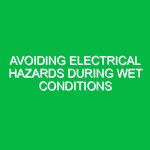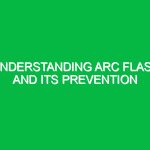In today’s world, where electricity powers almost every aspect of our lives, the safe use of extension cords and electrical tools has become a critical concern. Whether in residential settings, construction sites, or commercial environments, improper handling of these devices can lead to severe accidents, including electric shocks, fires, and even fatalities. Understanding the best practices for the safe use of extension cords and electrical tools is not just a matter of convenience; it is a vital part of health, safety, and environmental (HSE) management.
Understanding the Importance of Safe Use
The phrase “safe use of extension cords and electrical tools” refers to a set of guidelines and practices designed to prevent accidents and injuries associated with electrical devices. These cables and tools are essential for many tasks, from powering devices to completing DIY projects. However, their improper use can lead to significant hazards that affect both the individual and the environment.
Recent statistics from the National Fire Protection Association (NFPA) indicate that electrical failures and malfunctions account for roughly 13% of all home structure fires. This alarming figure underscores the importance of adhering to safety protocols. The relevance of safe practices extends beyond personal safety; it also encompasses environmental responsibility. Poor handling of electrical tools can lead to hazardous waste and pollution, impacting the environment long after the work is done.
Identifying Hazards and Risks
Understanding potential hazards is the first step towards ensuring safety in any electrical task. Here are some common risks associated with the use of extension cords and electrical tools:
1. Electric Shock
Electric shock occurs when an electric current passes through the body. This can happen if tools or cords are damaged or if they come into contact with water. The severity of the shock can vary, leading to anything from minor discomfort to serious injury or death.
2. Fire Hazards
Overloaded extension cords can overheat, presenting a significant fire risk. Additionally, frayed wires or cords placed under carpets can create dangerous situations. According to the Electrical Safety Foundation International (ESFI), extension cords are involved in approximately 3,000 residential fires each year, leading to injuries and property loss.
3. Equipment Damage
Using electrical tools improperly can lead to equipment damage. This not only incurs repair costs but can also result in more significant safety risks when malfunctioning tools are used in future tasks.
4. Environmental Impact
Improper disposal of electrical tools and cords can lead to environmental hazards. Many components contain harmful substances that can leach into soil and water, affecting local ecosystems.
Safety Precautions and Best Practices
To mitigate the risks associated with the use of extension cords and electrical tools, implementing safety precautions is essential. Here are some actionable best practices to consider:
1. Inspect Before Use
Always inspect extension cords and tools before use. Look for signs of wear, such as frayed wires, exposed conductors, or damaged plugs. If you identify any issues, do not use the equipment; instead, replace or repair it immediately.
2. Use the Right Cord for the Job
Ensure that the extension cord is rated for the intended use. For example, heavy-duty cords are necessary for power tools, while lighter cords are suitable for small appliances. Refer to the amp rating indicated on the cord to match it with the tool’s requirements.
3. Avoid Overloading Circuits
Overloading circuits is a common mistake that can lead to overheating. Be mindful of how many devices you plug into a single extension cord. A general rule is to limit the total wattage of devices plugged into the cord to ensure safe operation.
4. Keep Cords Dry and Elevated
Water and electricity are a dangerous combination. Always keep extension cords away from wet areas and ensure they are not submerged in water. Additionally, avoid placing cords under carpets or rugs, which can trap heat and lead to overheating.
5. Use Grounded Outlets
Whenever possible, use grounded outlets, especially for high-powered tools and equipment. Grounding provides an additional layer of safety by redirecting excess electricity away from the user in case of a fault.
6. Store Properly
When not in use, store extension cords and tools properly. Avoid coiling cords tightly as this can cause internal damage. Instead, loosely coil them and store them in a dry, cool place to prevent wear and tear.
7. Training and Awareness
Educating yourself and others about the safe use of extension cords and electrical tools is crucial. Regular training sessions can help reinforce best practices and ensure that everyone understands the potential hazards and how to mitigate them.
Regulations and Standards
Several regulations and standards govern the safe use of extension cords and electrical tools. Familiarizing yourself with these can help ensure compliance and enhance safety:
1. National Electrical Code (NEC)
The NEC provides guidelines for safe electrical design, installation, and inspection. It covers the proper use of extension cords, including ratings and usage conditions.
2. Occupational Safety and Health Administration (OSHA)
OSHA has specific standards regarding electrical safety in the workplace. Familiarizing yourself with these regulations can significantly reduce the risk of accidents and ensure a safer working environment.
3. American National Standards Institute (ANSI)
ANSI outlines standards related to safety in the use of electrical tools and equipment. Following these guidelines can help ensure that users are protected from hazards associated with electrical work.
Conclusion
The safe use of extension cords and electrical tools is an essential aspect of health, safety, and environmental management. By understanding the potential hazards, implementing best practices, and adhering to regulations, individuals and organizations can significantly reduce risks. Not only does this foster a safer working environment, but it also promotes responsible use of electrical resources, protecting both people and the planet.
Taking a proactive approach to electrical safety can save lives, prevent injuries, and mitigate environmental impacts. Whether you’re a DIY enthusiast or a professional tradesperson, your commitment to safe practices can make a significant difference in your work and the community around you.


